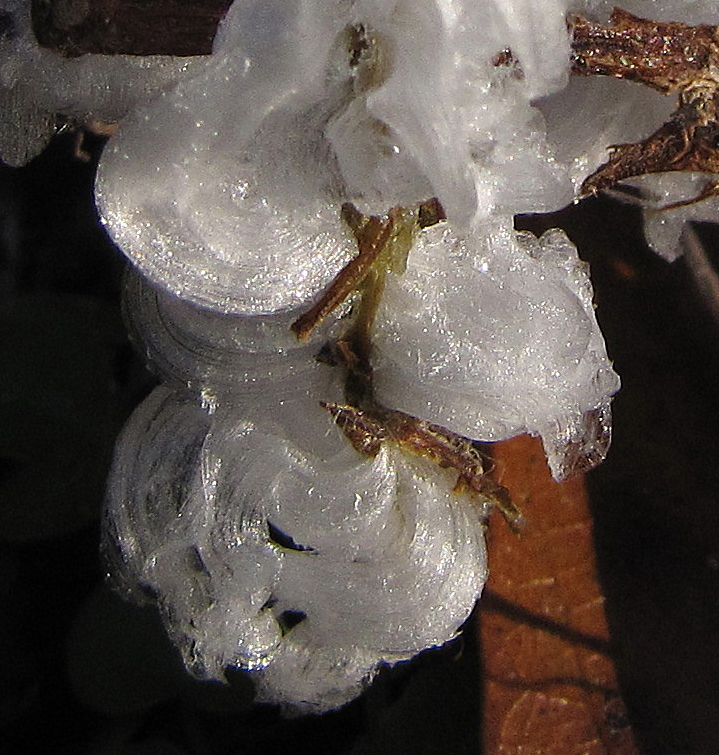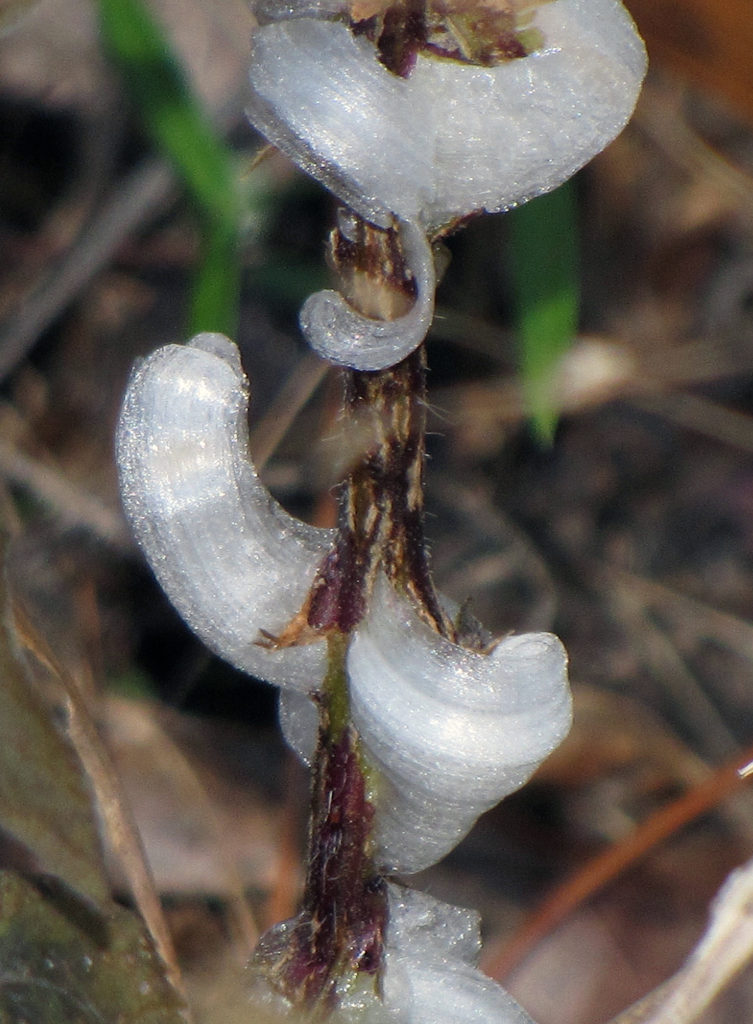Frost flowers — beauty and the brrrrr
by Jeff Norcini
“… a flower of ice crystal of purest white which shoots from the stem, bursting the bark asunder, and fashioned into all sorts of whimsical feathery curls and flanges and ridges.” — William Hamilton Gibson, Sharp Eyes: A Ramblers Calendar of Fifty-Two Weeks Among Insects, Birds and Flowers (1892)
Flowers of ice in Florida??? Yes, seeing is believing. I first saw icy flowers — often called frost flowers, ice flowers, ice ribbons, or the exotic-sounding crystallofolia — on a cold December morning in 2010. From a distance they looked like pieces of cotton attached to the stems of Tropical sage (Salvia coccinea) growing in my front yard. But up close, these icy formations were just as William Gibson described in the 1800s when he saw them on Longbranch frostweed (Helianthemum canadense).
Gibson wasn’t the first to notice frost flowers. James Carter, professor emeritus at Illinois State University, who has researched the history and science of frost flowers, noted that these beautiful ice formations were seen much earlier in the 1800s on several species, including White crownbeard (Verbesina virginica), which seems to be the most common frost flower species. He also noted a report of frost flowers on dying vegetable stems. (For more about the history of frost flowers, visit James Carter’s web page.)
So how do these frost flowers form? First, there must be the right plant in the right conditions. Only a handful of plants, including some of Florida’s native wildflowers, are known to form them. Besides white crownbeard and tropical sage, they have reportedly occurred on Wingstem (Verbesina alternifolia), camphorweeds (Pluchea camphorata, P. foetida, and P. odorata) and New York ironweed (Vernonia novaboracensis). The second critical factor is a combination of weather conditions, with a subfreezing temperature just one part of the equation. Carter points out that the dew point — the air temperature at which water condenses — also must be below freezing. Last, the soil temperature must be above freezing, which in Florida is rarely an issue. This combination of conditions is most likely to occur after the passage of a strong cold front during the very late fall and winter, when the sky is clear and wind calm.
When these conditions are met, super-cooled water (unfrozen water below the freezing point) flowing through a rupture in the stem can freeze when it makes contact with tiny frost crystals on the stem’s surface. The frost flower grows as the super-cooled water continues to flow through the stem and freezes where the stem and flower meet, pushing the existing ice outward.
For a detailed, scientific analysis of frost flower formation, read “A Speculative Scenario for Crystallofolia” by Bob Harms. To see an ice flower forming, check out this short video clip by Forrest M. Mims III.
So if you live in an area prone to subfreezing temperatures, consider planting a patch of white crownbeard or other frost flower species in hopes of experiencing some of Mother Nature’s wintry eye candy. Seeds can be obtained from the Florida Wildflower Seed and Plant Growers Association. Or, choose plants from a Florida Association of Native Nurseries member; visit www.PlantRealFlorida.org to find one near you.
Jeff Norcini is the owner of OecoHort LLC, a Foundation consultant.


